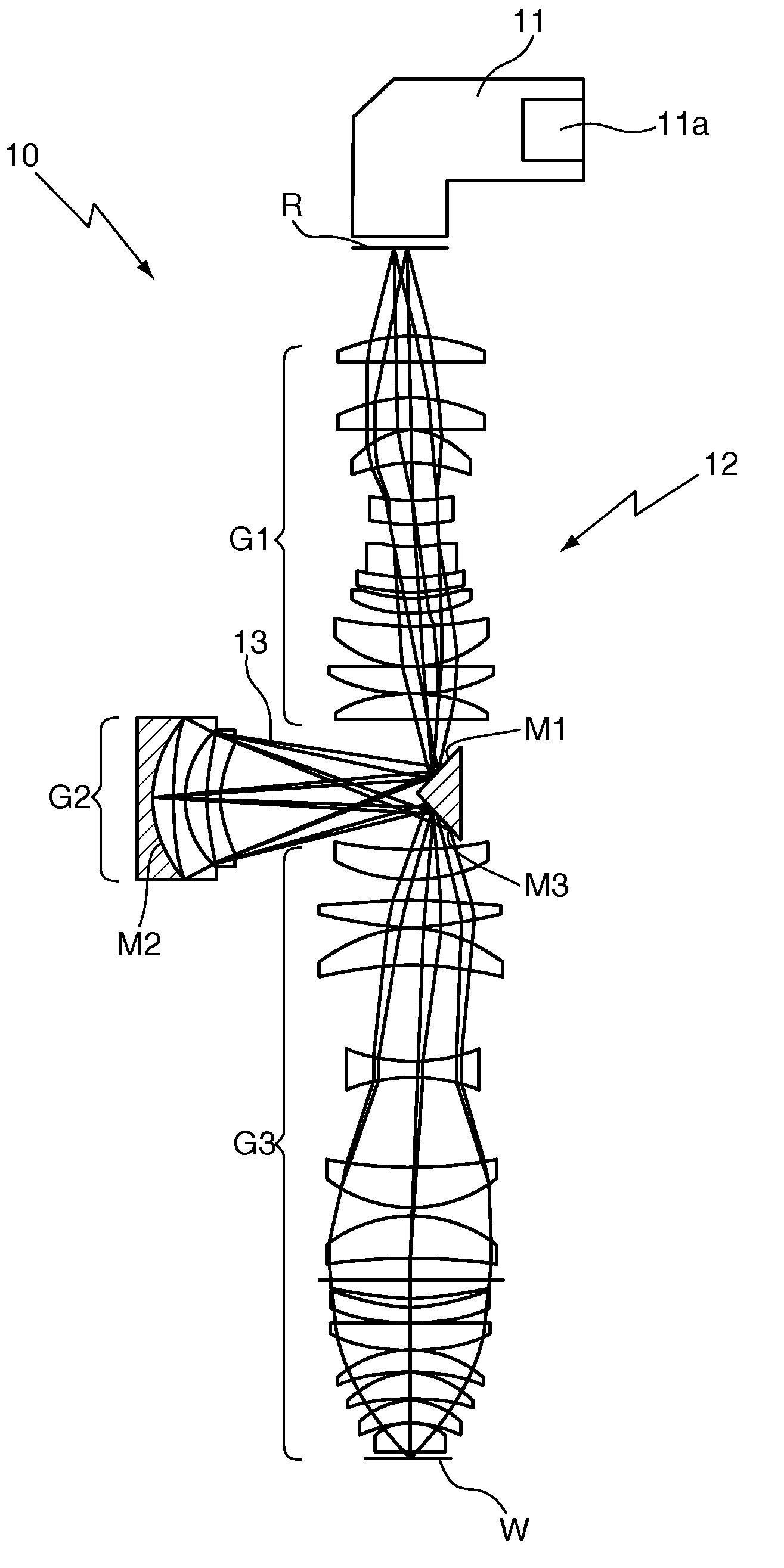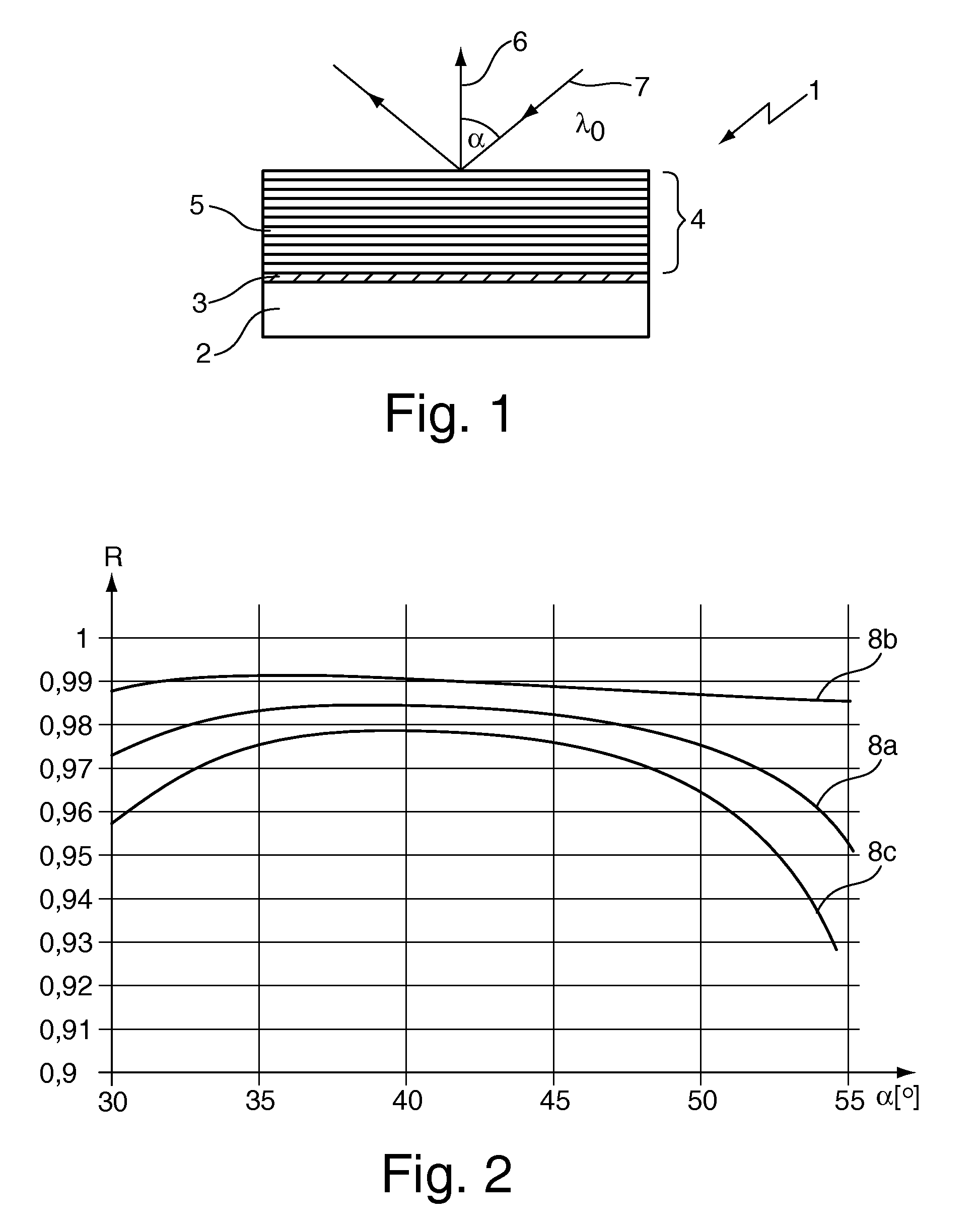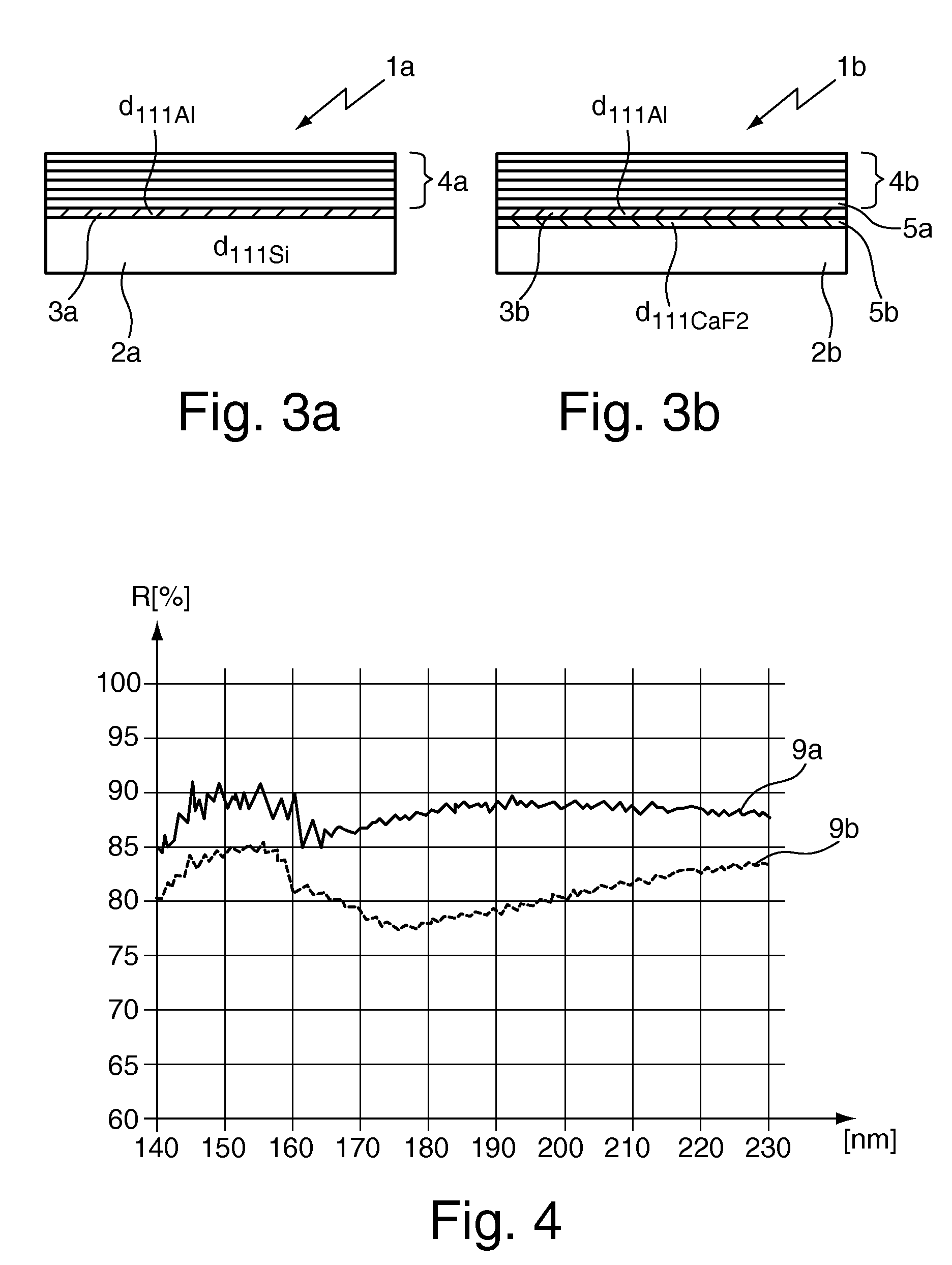Optical element for reflection of UV radiation, method for manufacturing the same and projection exposure apparatus comprising the same
a technology of optical elements and radiation, applied in the field of optical elements, can solve the problems of limited coating parameters, inability to produce aluminum layers, and inability to form aluminum layers by sputtering, and achieve the effects of increasing the overall reflectance of the optical element, low surface roughness, and cost-effectiveness
- Summary
- Abstract
- Description
- Claims
- Application Information
AI Technical Summary
Benefits of technology
Problems solved by technology
Method used
Image
Examples
Embodiment Construction
[0057]In FIG. 1 an optical element 1 is shown schematically having a substrate 2 of quartz glass, onto which a layer 3 of amorphous silicon has been deposited as a basic material. A multi-layer system 4 is arranged on the layer 3 comprising a plurality of single layers. The fifth single layer 5 as viewed from substrate 3 has been deposited here by ion beam sputtering generating an energy input of approx. 10 mJ / cm2 into single layer 5 in order to provide said single layer with a package density of more than 0.99. In the process the subjacent layer 3 consisting of silicon is heated. This heating, however, does not result in a noteworthy rearrangement of the atoms in the surface of silicon layer 3 due to the high melting point of silicon of approx. 1410° C. such that the said layer is not fused locally and has a roughness of less than 1 nm rms even though the single layer 5 and / or the multi-layer system 4 has been deposited.
[0058]Besides amorphous silicon, particularly crystalline sili...
PUM
| Property | Measurement | Unit |
|---|---|---|
| operating wavelength | aaaaa | aaaaa |
| incident angles | aaaaa | aaaaa |
| reflectivity | aaaaa | aaaaa |
Abstract
Description
Claims
Application Information
 Login to View More
Login to View More - R&D
- Intellectual Property
- Life Sciences
- Materials
- Tech Scout
- Unparalleled Data Quality
- Higher Quality Content
- 60% Fewer Hallucinations
Browse by: Latest US Patents, China's latest patents, Technical Efficacy Thesaurus, Application Domain, Technology Topic, Popular Technical Reports.
© 2025 PatSnap. All rights reserved.Legal|Privacy policy|Modern Slavery Act Transparency Statement|Sitemap|About US| Contact US: help@patsnap.com



